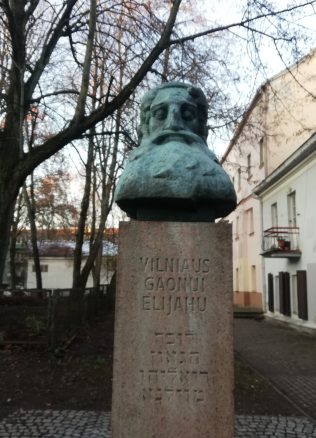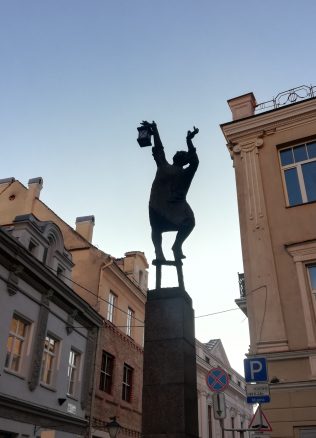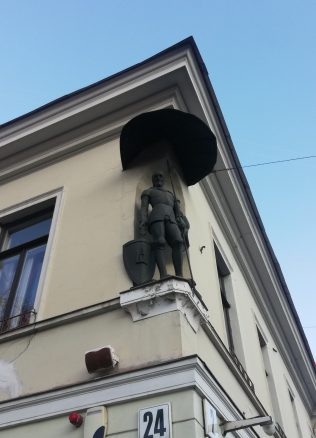Memorial Plaque to Simonas Kerelis
In Medieval Europe, England and France in particular, many Christians believed that during Pesach, the holiday commemorating the Jewish Exodus from Egypt, Jews re-enact the crucifixion of Christ and use the Christian children’s blood during the ritual.
Jesuit theologian and the first rector of Vilnius University Piotr Skarga introduced the narrative to a broader audience of the Grand Duchy of Lithuania. In his book “The Lives of Saints” (1577) he wrote that the Jews tortured Simonas Kerelis, a seven-year-old boy from Vilnius, to death.
Historian Albert Wijuk Kojałowicz also wrote about a boy killed by the Jews in his “Historical Miscelania on the State of the Church in Lithuania” (1650): “Seven-year-old boy of Lithuanian descent, born in Vilnius, was killed in 1592 by the Vilnius Jews, who stabbed him to death with knives and scissors with utmost cruelty. He suffered 170 wounds, moreover, he was tortured by shoving splinters under his fingernails. He was buried in the church of Bernardine fathers in Vilnius. Later on, in 1623, his body was moved to a marble grave outside the church.”
The stories popular in the GDL featured a multitude of harrowing details about the wounds inflicted to the alleged victims. By the late 18th century, much later than in Western Europe, the narrative expanded to include unleavened bread, matzos, that the Jews bake for Pesach – using Christian blood, of course. Later on, even more elaborate versions of the faux story emerged.
Learn more about the Myths of Ritual murder by clicking this link.
Address: Maironio St. 10



